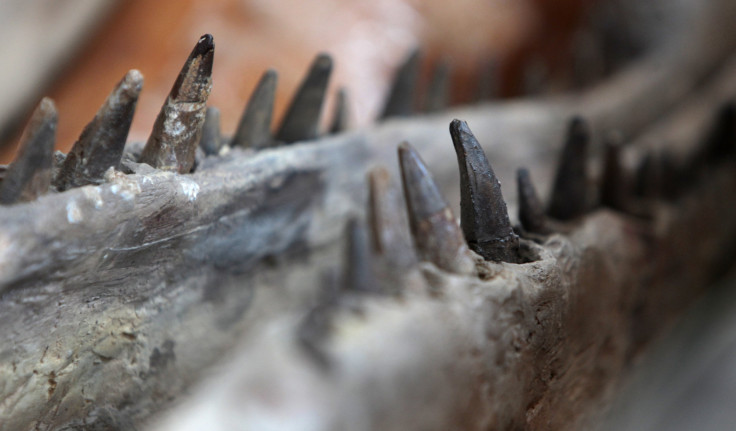Duck-Billed Dinosaur, Hadrosaurid, Had Over 300 Teeth: Here's How They Worked

Duck-billed dinosaurs roamed the planet in the Cretaceous period some 65 to 90 million years ago in North America, Europe and Asia. What made these specimens, called hadrosaurids, so unique were their teeth: they had anywhere from 300 to 1,400 teeth on their broad jaws.
Now, researchers from the University of Toronto Mississauga have analyzed the dinosaurs’ dental system on a microscopic level to understand how it all works. According to team, who published their findings in the journal BMC Evolutionary Biology, the dinosaur had a “highly dynamic network” of teeth, with parallel stacks of six or more teeth.
"It's very elegant -- not a single brick of teeth working as a solid unit," said Robert Reisz, vice-dean at the University of Toronto Mississauga, in a statement. "It's more like chainmail, providing flexibility as well as strength."
The sheer number of teeth gave the hadrosaurid, a plant-eating dinosaur, the ability to chew on abrasive plants. Unlike humans and other reptiles, the species did not shed and replace teeth. The most interesting finding, say the researchers, is the fact that the columns of teeth did not physically touch. Instead, the teeth were reliant on a complex set of ligaments.
"Hadrosaur teeth are actually similar to what we have because our teeth are not solidly attached to our jaws,” said Reisz. “Like us, hadrosaur teeth would have had some fine-scale mobility as they chewed thanks to this ligament system that suspended the teeth in place."
Upon analyzing the grinding surface of the teeth, the researchers found that the specimen’s teeth were dead, as they were filled with hard tissue. In comparison, humans have blood vessels and nerves in the inner core of their teeth.
"Since the teeth were already dead, they could be ground down to little nubbins," said Reisz.
While scientists have long known about the uniqueness of the hadrosaurids’ teeth, they had not looked deeply into the dental system. The team at the University of Toronto created sections from teeth from the upper and lower jaw, and examined the samples with a powerful microscope.
"The amazing thing is how consistently these dental assemblies conform to our hypothesis of how the system works," said Aaron LeBlanc, a University of Toronto Mississauga PhD candidate, in a statement. "Even in the youngest specimens, the same processes that maintained dental assemblies in the adults were visible."
© Copyright IBTimes 2024. All rights reserved.






















